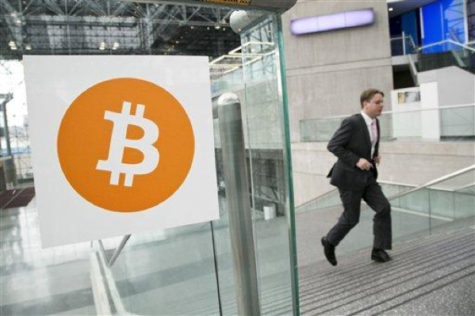How Bitcoin Works
January 12, 2018

Bitcoin dominated headlines in 2017, but how does it work?
Bitcoin is a cryptocurrency, commonly called coins, a form of money only exchanged on the internet that has no physical form. While it holds value in physical currencies like US dollars for trade purposes, bitcoin does not have any immediate value. Because of this, its value is determined exclusively by the supply and demand of the market. Despite the unstable nature of these coins, they have become extremely valuable in 2017.
As their name suggests, cryptocurrencies can be used to buy goods and services on the internet. Companies ranging from Microsoft to Subway now accept bitcoin for purchases. Despite volatility that can erase millions of dollars in value in seconds, eBay CEO John Donahoe defended his choice to allow the use of bitcoin on eBay by saying, “Not only is Bitcoin exciting, it’s also going to play an “important role” in the future of [our company]”
Bitcoin was created in 2009, when an anonymous user created a program that creates, or “mines”, new bitcoins through the use of algorithms. Computers running these algorithms work around the clock, and CBS reports that bitcoin mining consumes more energy than 159 countries every day. High cost yields high rewards; according to CNN, miners receive an average of 12.5 bitcoins, a value of over $200,000 as of January 1, 2018, every 10 minutes.
Many cryptocurrency users use the platform to make money. Coin trading, like the stock market, involves buying coin when prices are low, then selling purchased coins when prices rise. As the popularity of cryptocurrencies rise, trading markets have had trouble adjusting to higher client volume. US-based exchange Coinbase doubled its user base from November 2016 to November 2017, and experienced crashes and trade delays as servers struggled to handle the increased traffic.
As of January 3, 2018, Bitcoin is by far the most popular cryptocurrency in the world. According to coinmarketcap.com, Bitcoin carries a total market value of $260 billion, which accounts for about 41% of the entire cryptocurrency market. While the price of Bitcoin can fluctuate by several thousand dollars at a time, the price of a single coin was over $15,000 as of January 2, 2018. That is a 1,400% increase from its price at the same time in 2017.
Bitcoin’s competitors in the coin market have also exploded in value in 2017. Ethereum, widely considered to be the main alternative to bitcoin, has risen over 8,600% since January 3, 2017, according to Coinbase.com.
Despite the historically positive returns and huge potential, financial experts are generally cautious about investing in cryptocurrency. Bubbles are a term for markets that are artificially inflated in value, and create market crashes when they burst. Notably, the late 2000s housing bubble created the massive recession in 2009, and resulted in a global loss of $4.1 trillion.
Jeremy Grantham, an investor who correctly predicted major stock market crashes including the housing crash, has called bitcoin a bubble by saying “Historical analogy suggests this junior bubble, by size, may well crash and burn even before the broad market peaks.”
Bitcoin, like all cryptocurrencies, is decentralized. This means that it has no official affiliation with any currency issued by a government. In the event of a crash, bitcoin and its alternatives would have nothing to subsidize the market and prevent a complete loss of value. In the case of the housing crash, the United States government paid $16.8 trillion to bailout losses incurred by banks and the mortgage industry, preventing an even greater loss. If Bitcoin begins to fail, nothing will be in place to stop it from becoming completely worthless.
Despite the dangers, Bitcoin and other coins are promising investment opportunities. Investors point to monumental returns, while critics argue that volatility makes the risk outweigh the gains. Only time and the market will tell whether cryptocurrencies are here to stay.






